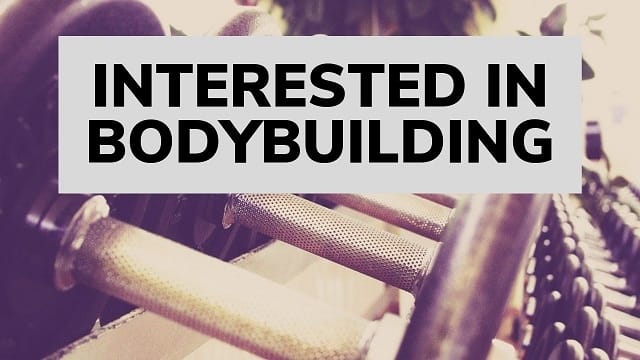Bodybuilding is the use of diet and exercise to achieve an aesthetically pleasing physique. People use bodybuilding for competitions, overall attractiveness, and even as a hobby. If you’re interested in bodybuilding or just starting, you may have difficulties developing a plan of action. Luckily, you can begin your journey of this rewarding lifestyle with a few simple tips. First and foremost, however, you should consult with your doctor to make sure a bodybuilding diet and exercise routine would be safe for you.
Research
Like any new diet or workout, performing research is the first step to success. If you start with no information or scientific backing, you’re doomed to fail. Bodybuilding especially requires careful planning and tailoring to your specific body, habits, and goals. Thankfully, the Internet boasts a hoard of reliable information and forum boards you can access for free. See these helpful tips from Jay Cutler to get a basic overview of bodybuilding safely and effectively. If you have questions, consider a reliable forum or a professional to ensure the best quality of information possible. As mentioned before, the research step of your process should include a visit to your doctor to make sure you can safely handle the rigors of bodybuilding.
Exercises

Bodybuilding is achieved through a number of different physical approaches, but the most basic approach features resistance training. The way to get cut, bulky muscles is by cycling through two main areas of resistance training: high repetitions with low weight or low repetitions with high weight. Generally speaking, professional bodybuilders focus on higher repetitions, occasionally supplementing with higher weight for shocks to the muscle.
Aim for a weekly workout routine that features three different types of days: push, pull, and legs. If you wanted to start working out three times a week, you could follow this schedule:
- Monday: Shoulders, Chest, Triceps (Push)
- Tuesday: Rest
- Wednesday: Biceps, Back (Pull)
- Thursday: Rest
- Friday: Legs
- Saturday: Rest
- Sunday: Rest
Basically, on the “Push” days, you focus on exercises that push weight from your body: think pressing movements like a bench press, overhead press, or incline press. “Pull” days feature the opposite. Pull-ups, the rowing machine, and dumbbell curls are all examples of pulling the weight towards you. Leg days feature squats, deadlifts, and calf raises. Breaking the days up like this ensures an even recovery of muscles, and you train a new muscle group every day. If you want to increase the amount you’re working out per week, simply cycle your push, pull, and leg days more frequently with an appropriate amount of rest in between.
Calorie Intake

While exercise is important for muscle growth, your diet is the primary driver behind an effective bodybuilding routine. Experienced bodybuilders focus on two phases of diet goals: bulking and cutting. As the name implies, bulking features a large quantity of food to increase muscle mass. Cutting, however, features a smaller quantity of food to induce fat loss while maintaining the built-up muscle. For bodybuilding competitions, professionals will bulk, then cut briefly before the event for maximum results.
The most effective way to track your calorie intake is through macronutrients, the three building blocks of nutrients in our food. While you are adjusting your caloric intake, you need to make sure the food you are eating follows the correct macronutrient levels for your goals. During bulking periods, you should be getting at least 1 gram of protein per each pound of bodyweight. Fat is necessary for bodily functions throughout any lifestyle, so .35 grams per pound is adequate. Carbohydrates are your primary source of energy, especially for grueling resistance workouts: 2 grams per pound is a good guide to follow.
During your cutting phases, you need to make sure the quality of your diet does not diminish with the decrease in caloric intake. Proper protein intake is essential during this process to avoid losing muscle mass, and fat intake also needs to increase to ensure hormonal balance while you lower your nutritional value.
If this seems confusing, don’t worry. There are plenty of free calculators to do the math for you when it comes to calculating calorie intake, macronutrient breakdown, and your overall body fat percentage.
Remember to stay patient during this process. No one becomes shredded in a week, and many people stick to this lifestyle for months before seeing any progress. Adapt your routine to the results you see, continually reach out for support from the community, stay disciplined, and you will see results.

